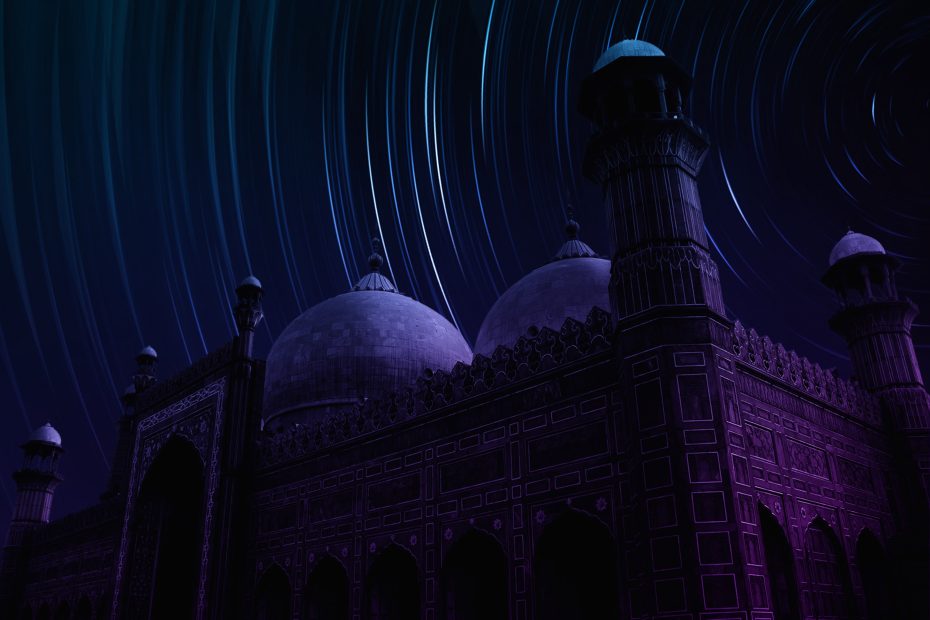Table of Contents
Introduction
Pakistan is a country steeped in tradition and cultural diversity. Its various ethnic groups, religions, languages, customs, and clothing make for a vibrant mix that is distinctly Pakistani. One of the most prominent manifestations of the country’s rich culture is its colorful aesthetic across various facets of daily life. From textiles and crafts to food and transport, color plays a central role in shaping Pakistan’s cultural identity.
Pakistan’s Vibrant Clothing and Textiles
Traditional Outfits
The shalwar kameez, a long tunic worn over loose trousers, is Pakistan’s traditional outfit. Women team it up with a dupatta or stole while men wear it with a waistcoat. These outfits come in a riot of colors, fabrics, and designs unique to each region. Common motifs include floral patterns, paisley, and traditional embroidery like chikan, zardozi, and gota. The kaleidoscopic variety reflects the diverse textile heritage of provinces like Punjab, Balochistan, and Khyber Pakhtunkhwa.
Intricate Embroidery and Mirrorwork
A distinguishing aspect of Pakistani dresses is the intricate hand embroidery and mirror work on them. Crafts like rilli, tilla jali, and ari work employ bright floss silks and beads to create colorful embroidered patterns on fabric. Mirrorwork adds shimmery accents and is a specialty of Sindhi and Balochi craftspeople. The painstaking details showcase the rich textile craft heritage.
Fashion Trends
Contemporary Pakistani fashion also incorporates color in innovative ways. Designers blend traditional embroidery and crafts with modern silhouettes and digital printing. Western cuts and fabrics now feature South Asian designs and motifs. Fashion shows and boutiques display a fresh take on conventional Pakistani textiles and colors.
Trucks and Buses
Vibrant Decor
Colorful patterns and designs adorn trucks and buses across Pakistan. Intricate paintings and calligraphy transform drab vehicles into vibrant works of art. Decorative motifs and symbols cover every inch of the exterior. Mirrored mosaics add extra shimmer. Passenger vehicles like rickshaws also sport similar ornamental paint jobs. This truck art encapsulates the flamboyant spirit of Pakistani streets.
Cultural Motifs
The truck art displays common motifs like animals, flowers, and landscapes. Calligraphy often depicts poetry, blessings, or the driver’s name. Intricate patterns take inspiration from Mughal architecture, Persian design, and local folklore. These motifs embed cultural stories into ubiquitous vehicles. For many Pakistanis, trucks are rolling symbols of heritage.
Pottery and Crafts
Multicolored Pottery
Places like Multan and Hala are renowned for their brilliant pottery. Multani arts use vivid cobalt blues, greens, yellows, and reds to decorate surfaces. Mixing chalk into clay also allows potters to shape color-swirled vessels. The electrifying patterns encapsulate the creativity flowing through Pakistan’s crafts.
Traditional Handicrafts
Color also dominates handicrafts like lacquer work, block printing, ceramics, silk weaving, and leatherwork. For instance, Kashmiri lacquerware features Urdu couplets on vibrant papier-mache backgrounds. Sindhi ajraks use block printing to create indigo-blue designs on white cloth. These painstaking, age-old techniques produce works brimming with cultural color.
Food Culture
Colorful Spices and Ingredients
Pakistani cuisine is unimaginable without color. Vibrant yellow turmeric, deep red paprika, green cardamom pods, saffron strands, pink pickled onions – traditional recipes use colorful ingredients. This makes the food visually stimulating. Certain dishes like biryani highlight contrasting colors to accentuate taste. The colors tell stories of spices’ origins and Pakistan’s culinary philosophy.
Dish Presentations
Restaurants also focus on food presentations. Breads may have herb garnishes while biryanis, kebabs, and desserts use food coloring for visual appeal. Flower motifs decorate pastries and clearly define ingredients in pilafs. Pakistan’s cuisine contains as much symbolic color as flavor.
Festivals and Celebrations
Religious Festivals
Religious festivals like Holi, Diwali, and Eid inject color into people’s lives. Houses are decorated with Rangoli during Diwali while Eid sees a rush for new clothes. The Hindu Holi festival literally involves throwing colored powder in the spirit of joy and togetherness. These events unite various communities in a riot of sound, color, and festivity.
Wedding Celebrations
Pakistani weddings epitomize the cultural significance of color. Decor features lights and florals in vibrant hues. Brides don elaborate red, gold or green attires and henna, while the groom sports a colorful turban. These joyous occasions employ colors as auspicious symbols and to reflect Pakistani tradition.
Architecture
Colorful Facades
From mosques to forts, temples and havelis – Pakistani architecture employs color to reflect its grandeur and heritage. Multicolored frescoes,jaalis, and glazed tilework adorn many facades. Inviting blues, soothing greens, and cheerful yellows typify Mughal structures. Buildings like the Wazir Khan mosque or Lahore Fort exemplify the creative use of color.
Conclusion
In conclusion, color is deeply ingrained into the very fabric of Pakistani culture. The vibrant outfits, truck art, spices, festivals, and monuments all speak to the cultural belief in using color for expression, identity, celebration, and creativity. Pakistan’s artisans have mastered the use of color over centuries. The nuanced displays across cultural realms will hopefully keep evolving colorfully into the future.
FAQs
Q: What are some examples of traditional Pakistani outfits?
A: Some examples are the shalwar kameez, sari, lehenga, sherwani, and ajrak. Pakistani clothing incorporates bright colors, mirrorwork, embroidery, and traditional textile designs.
Q: How does color manifest itself in Pakistani architecture?
A: Pakistani architectural heritage makes extensive use of colors through painted facades, frescoes, glazed tiles, jaalis (lattice screens), and inlay work. Structures like the Badshahi mosque and Lahore Fort display this.
Q: What types of crafts incorporate color in Pakistan?
A: Crafts like pottery, lacquerware, silk weaving, ajrak block printing, truck art, and ceramics use vibrant colors and intricate designs. These handicrafts showcase Pakistan’s artisanal heritage.
Q: What is the significance of color in Pakistani weddings?
A: In weddings, color conveys celebration and cultural identity through the bride and groom’s attire, floral decor, and henna. Certain hues are seen as auspicious. The vivid aesthetics reflect Pakistani tradition.
Q: How does Pakistani cuisine employ color?
A: Pakistani food uses colorful spices, herbs, and techniques like flower garnishing. Dishes highlight contrasting ingredients. The visual appeal matches the rich flavors.
